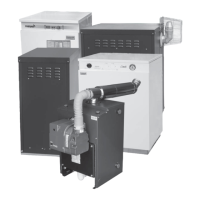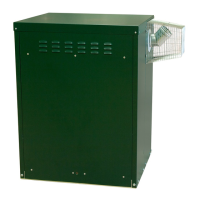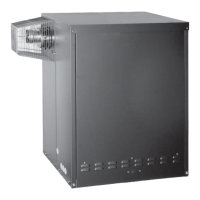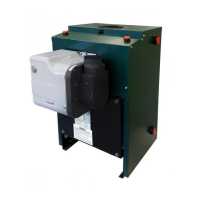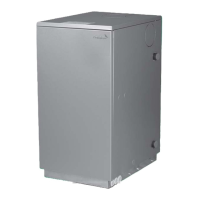TWO PIPE SYSTEMS
Where installations have the bottom of the tank below
the oil burner pump a two pipe system is required.
Ensure that valves and filters are not fitted in the return
line as this must be unobstructed at all times.
The oil burner pump should be set for two pipe
operation as detailed in accompanying oil burner
manufacturers manual, refer also to page 57 of this
manual.
TIGERLOOP SINGLE PIPE SYSTEMS
IMPORTANT:
The Tigerloop should not be fitted inside the
dwelling - See TI/139 drawing below and OFTEC
manual book 3 page 2(8:1)
Where installations normally require a two pipe system
but have long or impractical return line runs, a
‘Tigerloop’ De-aerator can be used which removes air
from a single - pipe - lift oil feed.Higher lift heights can
be achieved than are possible with conventional two
pipe systems.
The oil burner pump should be set for
two pipe operation.
INDIVIDUAL TIGERLOOP INSTRUCTIONS
MUST BE IMPLICITLY FOLLOWED.
Firebird Enviromax Condensing Range
6
55
6.6 - OIL SUPPLY
REGULATIONS & STANDARDS
In England and Wales, installation in single family
dwellings have to comply with the building Regulations
Part J.This requires compliance with BS 5410 : Part 1 :
1997. All tanks either deemed to be at risk or with a
capacity of more than 2,500 litres will require to be
bunded.
For installation in Scotland, Building Standard Part F
applies.This requires compliance with BS 5410 :Parts 1
and 2. All tanks either deemed to be at risk or with a
capacity of more than 2,500 litres will require to be
bunded.
Those externally installed tanks with a capacity of less
than 2,500 litres will require a bund if located not more
than 50 metres from a spring or bore hole, 10 metres
from controlled waters and additionally where it may
constitute a hazard.
The above risks and hazards are described in OFTEC
Technical Information Note TI/133.
In Northern Ireland, the Building Regulations do not
currently cover the installation of oil storage tanks.
In the Republic of Ireland the requirements of BS 5410:
Parts 1 and 2 are required to be complied with be
Building Regulations Part J.
FIRE VALVES
A fire valve is an essential part of the oil supply system.
It should be capable of cutting off the flow of oil
outside the building in the event of a fire starting up
within the boiler. The valve should be located just
outside the building at the point where the oil supply
line enters. It must be activated by a remote sensor
located over the burner, but in a position clear of any
direct radiation or excessive heat.
IMPORTANT: Fire Valves should comply with
OFTEC S
tandar
ds OFS E101
Fitting of Fire Valves should
comply with BS :5410 Part 1
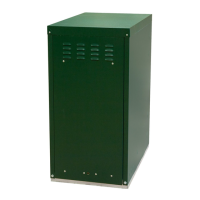
